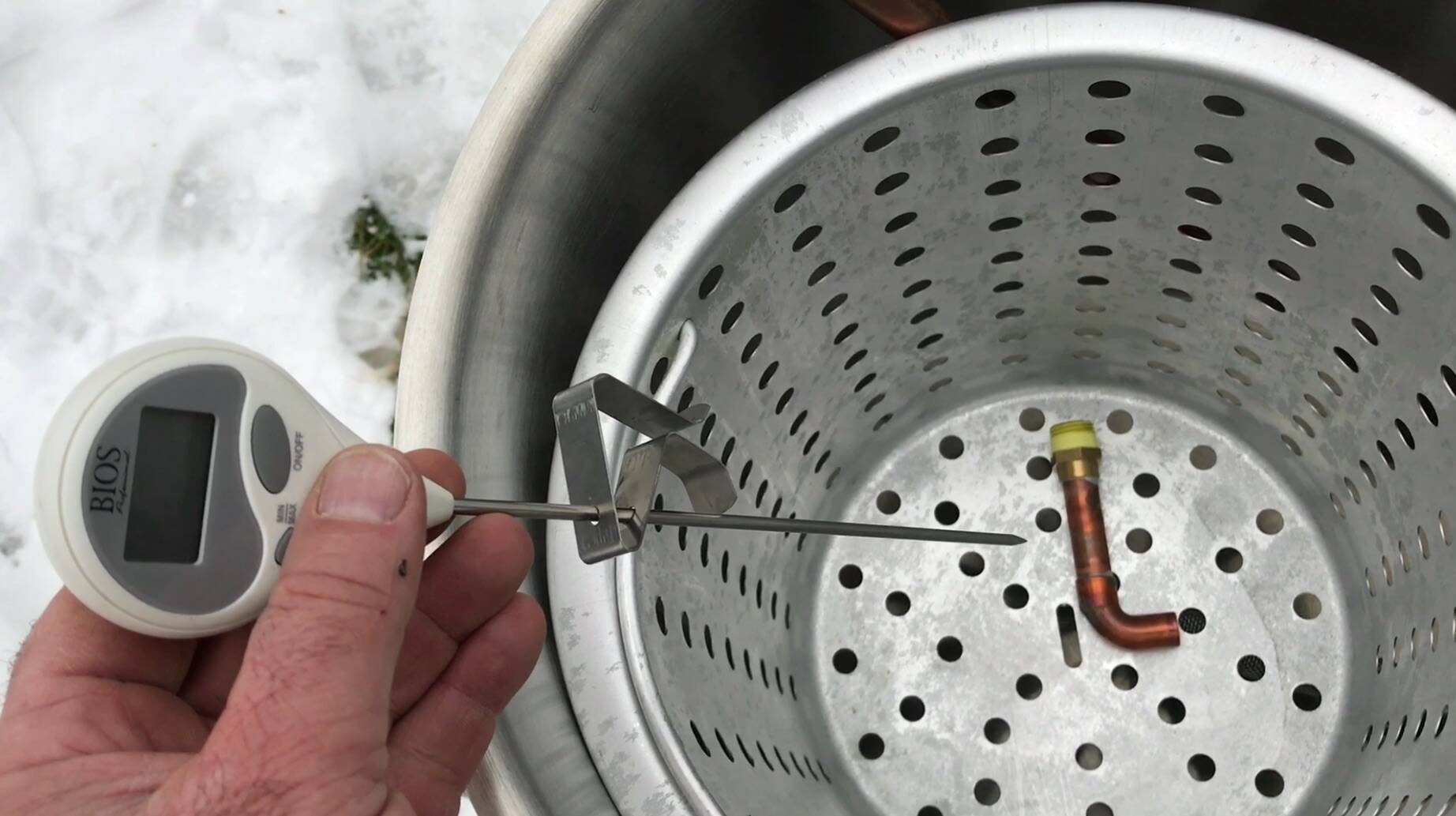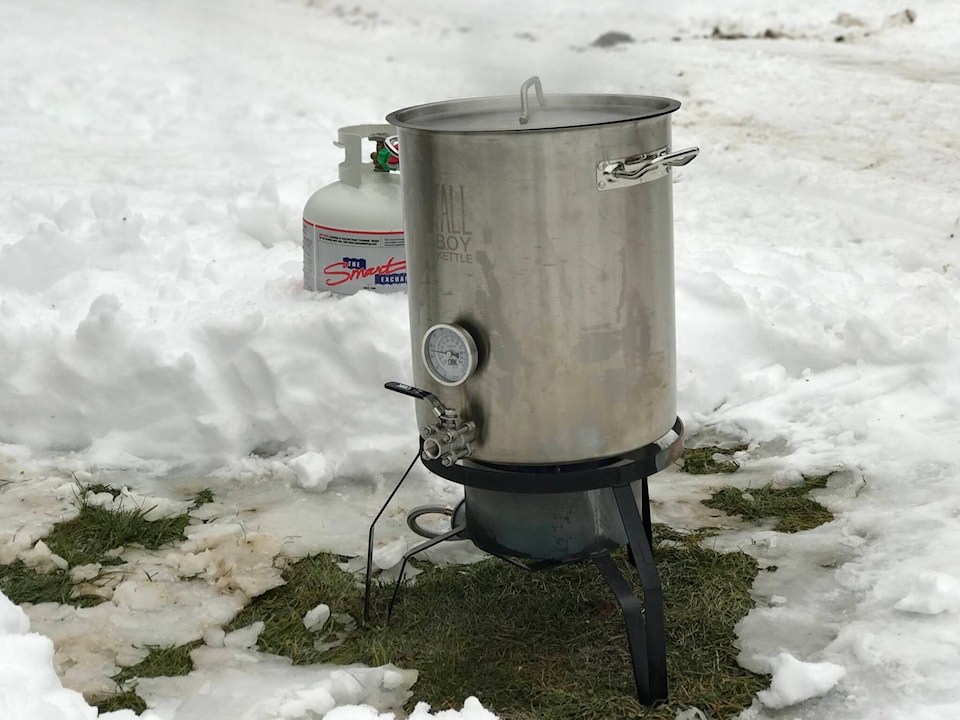If you’re oven-roasting a turkey today, then you might find it interesting to learn about another method of cooking that’s faster, tastier and moves the cooking process outdoors, freeing up more kitchen space.
We’ve deep fried a number of turkeys here at our place over the years, and if it’s too late for you to try this year, you might consider it for next time. Here are the basics.
The Gear
Deep frying a turkey is no different than deep frying anything, except that it’s a larger job and it always happens outside. You’ll need a big pot with a removable internal basket, a propane burner, and a thermometer.
There are many turkey-sized deep frying pots available (some come with burners), but most are made of aluminum.
Is this a health issue? I don’t know for sure, but since elevated levels of aluminum are sometimes found in the brains of people with dementia, why take a chance? In my case I bought a 10 gallon stainless steel beer brewing kettle and it works perfectly. I use this same kettle to make batches of bone broth and for big corn and wiener roasts.
The propane burner is not so critical, and anything made to support and heat a big pot outdoors will work fine. Same goes for the digital thermometer.
The most common and economical kind of cooking oil is canola, and while it does a good job, it’s not the very best for deep frying. From my tests I’ve found that peanut oil is better, mostly because it imparts no flavours to food and it can be heated hotter than other oils.
The thing is, you’ll need 20 or 25 litres of oil for a big turkey and that would be very expensive if it were peanut oil.
That’s why I use canola oil for turkeys but peanut oil in our smaller deep fryer. One nice thing about using a brewing kettle for deep frying is that it has a spigot and valve that makes it easy to draw off the cooled oil in a controlled way and filter it for storage.
The Process
Turkeys must be completely defrosted and dry before immersing in hot oil for cooking.
Any remaining frost or pools of internal water will boil rapidly and could cause hot oil to splatter out.
The oil should be at least 350 F before the turkey goes in, and you should wear gloves and safety glasses any time you’re around the cooking turkey.
Locate the frying pot completely outdoors and at least 20 feet from anything flammable.
When the oil is hot enough, place the dry turkey into the cooking basket, then slowly lower the basket in the oil while wearing heavy work gloves. Lower it 3 or 4 inches into the oil, wait for 10 or 15 seconds, then lower it some more, pause, then continue until the whole turkey is submerged.
Keep your thermometer in the oil and you’ll see the temperature drop at first, then come back up as the burner continues to add more heat.
Deep frying a turkey takes much less time than roasting. Where it might take four or five hours to cook an average sized bird in an oven, even a big turkey can be thoroughly deep fried in 45 to 60 minutes. This speed is a plus, but it’s not the main reason people love deep fried turkey.
The Results
Crispier on the outside, juicier on the inside. This is what makes deep fried turkey so prized. Every inch of skin is deliciously crisp, and the majority of juices were locked into the meat as the skin seared and sealed quickly at the beginning of the cooking process.
Steve Maxwell could eat turkey every day and still enjoy it.

